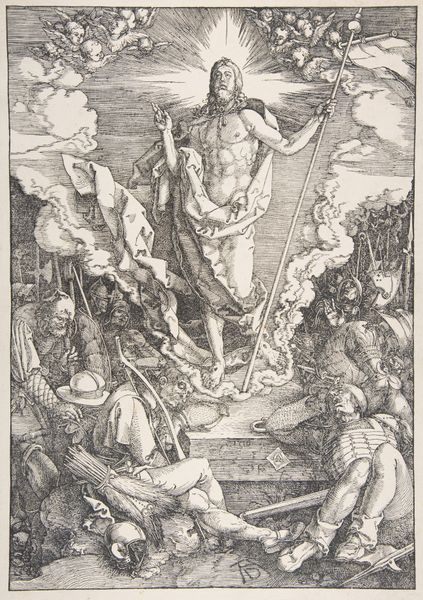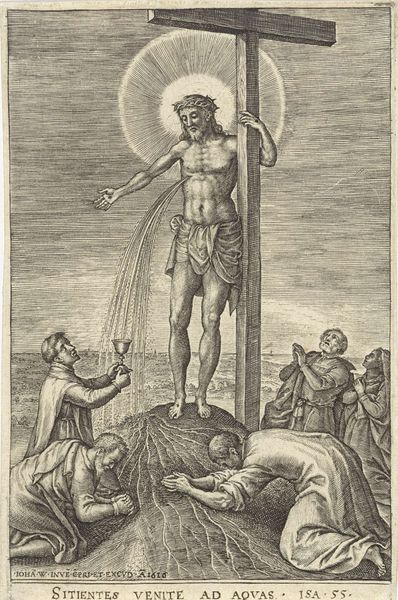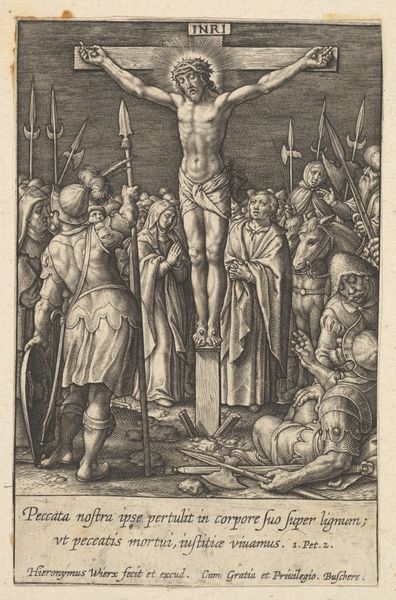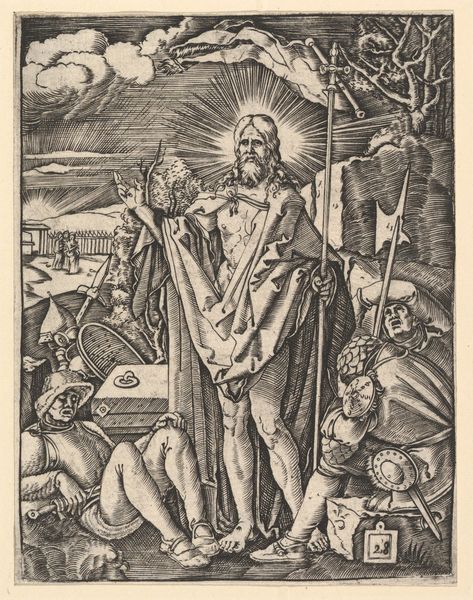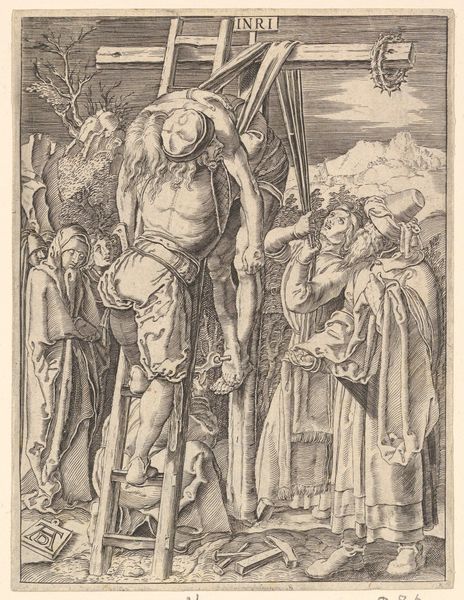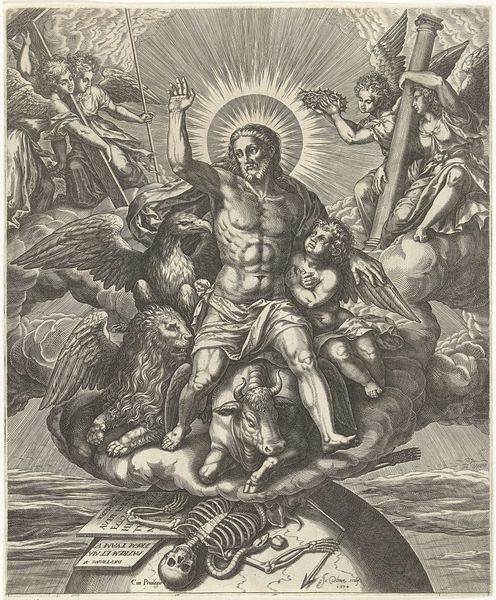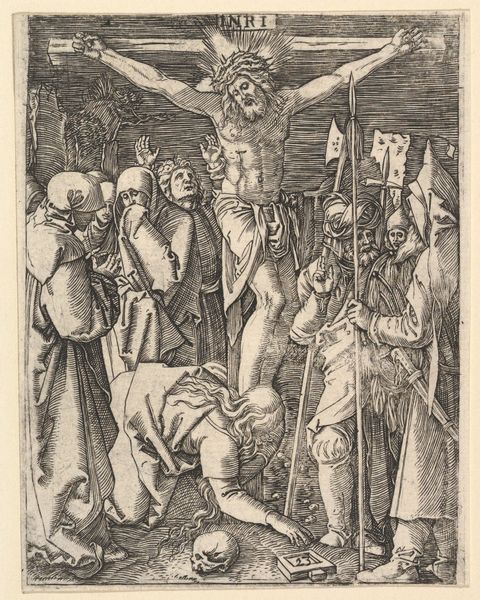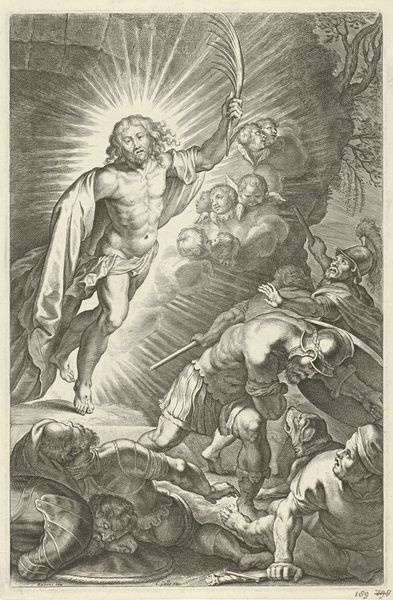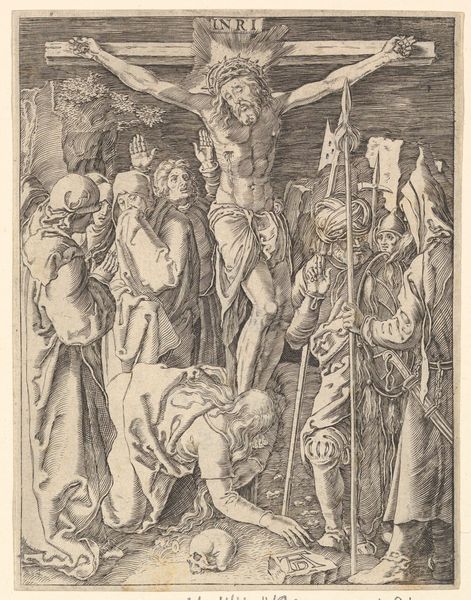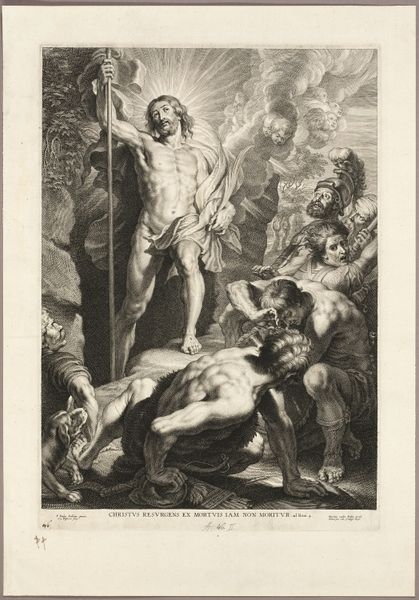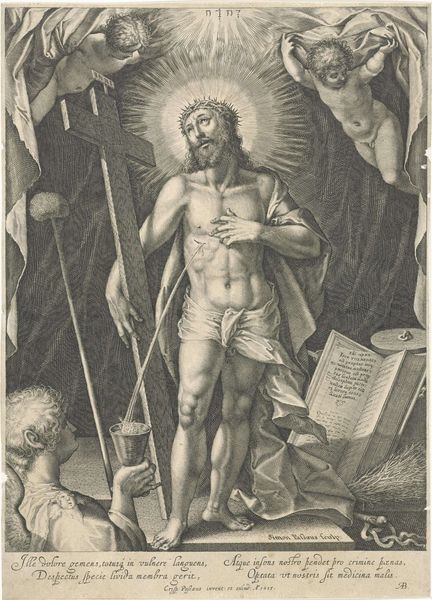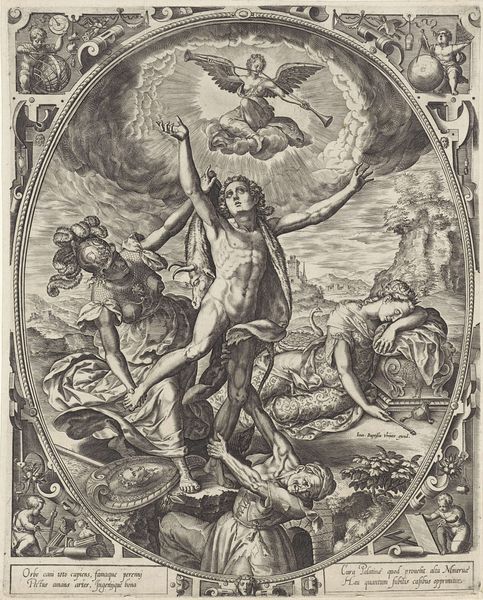
Dimensions: height 109 mm, width 71 mm
Copyright: Rijks Museum: Open Domain
Editor: Here we have "Opstanding," or "Resurrection," by Karel van Mallery, created sometime between 1581 and 1645. It's an engraving. I’m immediately struck by the theatrical drama of the scene – Christ emerging powerfully while soldiers are scattered around him. What can you tell us about the historical context that influenced a work like this? Curator: It's essential to understand the socio-political climate of the time. This engraving, made during the Counter-Reformation, depicts Christ's resurrection, a powerful statement reclaiming religious authority. Consider how the artist is using established visual language of Mannerism to portray what the institution found crucial to convey. How do you see that impacting the viewer? Editor: I see it now! The elongated figures and dramatic poses typical of Mannerism definitely add to the spectacle, and it feels intended to inspire awe – and maybe even submission. But, how did the distribution of prints like this shape religious identity and social power beyond just the direct visual experience? Curator: Precisely! Prints were a key medium for disseminating religious doctrine, shaping public perception and affirming the Church’s message to a broader audience, beyond physical presence within a church. By creating multiple copies, this image could spread throughout Europe, reinforcing particular interpretations of faith, and by extension, bolstering institutional control. Look at the symbolic elements, like the flag Christ holds – what does that tell you about the intended audience and their relationship to the imagery? Editor: I hadn't thought about the distribution aspect so explicitly. I guess it was a carefully planned strategy. Curator: Absolutely. The medium, the message, and the moment are intrinsically linked. Think of it as early mass media used to construct and reinforce belief systems. Editor: This conversation made me think a lot about the active role of prints as drivers of ideological movements. I had initially only looked at this piece as a standalone object of art! Curator: And I see now how Mannerism was effectively deployed to support religious power by visually stunning and convincing people across Europe. It has been enlightening!
Comments
No comments
Be the first to comment and join the conversation on the ultimate creative platform.
